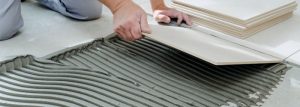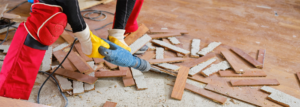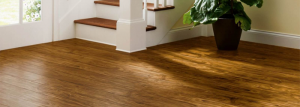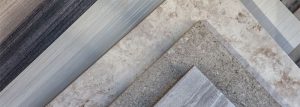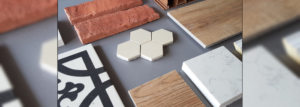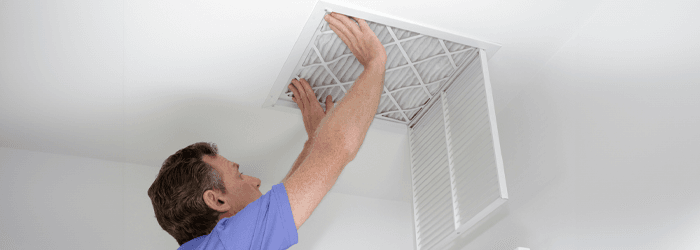What you need to know about flooring warranties.
Have you recently installed new flooring? Make sure you maintain it, so the warranty stays in effect. Has your current flooring seen better days? Does it need to be replaced? Will your warranty cover it? Mitch and Aaron Taylor of Bram Flooring, a Rosie-Certified Partner, give us the low-down on flooring warranties. One little mistake in the installation process or maintenance can void the warranty. From carpet, laminate, wood floors, tile, stone, and vinyl, they take us through the web of warranties.
Warranty Types

No matter who the manufacturer is or what the floors are made of, there are generally two kinds of flooring warranties: structural and finish. These warranties will protect and cover your floors for the period that the warranty is valid . . . provided you followed the guidelines to a T.
Structural Warranty
A structural warranty is related to defects in the structure of the hard flooring’s surface. Defects or failures include buckling, cupping, warping, delamination, and other defects specified by the manufacturer. In these instances, the manufacturer will be responsible for the replacement.
BUT, and it’s a big one, the structural warranty’s language is VERY important. It is usually something like this, “if properly installed and maintained.” That means the structural warranty is only valid as long as it was installed by and cared for to the manufacturer’s specifications. Not meeting these specifications is where flooring warranties tend to become void.
Finish Warranty
A finish warranty covers the finish and condition of the floor. With hardwood flooring, a finish warranty provides protection against wearing
down and exposing the bare wood beneath the hardwood finish. It may also apply to the finish layer separating from the plank. Here’s where that “if properly installed and maintained” line comes into play.
How To Void A Warranty
There are many ways that a warranty can be voided. There is an ownness that the manufacturer places on the consumer and installer to ensure the product is being installed and maintained per the warranty.
Manufacturers also have specific instructions regarding how their hard surface flooring should be installed, which is another consideration of the “properly installed” language. If the floor was not installed to the manufacturer’s instructions, and it becomes damaged along the way, your warranty will not cover a replacement.
Improper Installation
There are many facets regarding installation that must be met to ensure you meet the warranty’s requirements.
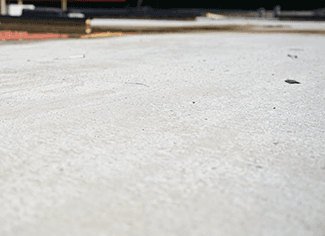
1 | Subfloors: The hard surface flooring must be “properly installed” by the manufacturer’s specifications. The most important is that the subfloor is even, flat, and damages have been repaired. With hard surface flooring, uneven or damaged subflooring can eventually cause planks and tiles to break, warp, or buckle. Because that damage is not a fault in the design of the plank, these issues, normally covered by the structural warranty, will not be honored.
Make sure the subfloor has been inspected and any flooring corrections that need to be made have been made before you get to installation.
2 | Spacing: “Vinyl plank is the biggest product out there today,” says Mitch. “There are so many things that can void a warranty.”
For example, there needs to be a gap the size of the edge of a credit card (1/4”) all the way around the edge of the floor and baseboards, and it cannot be caulked. Vinyl plank floors are a floating floor system that is meant to move.
3 | Concrete Considerations: If there is a crack in the slab, then it requires a new level of preparation. The crack will need to be ground to flatten it out and may require leveling, which can get quite expensive. Hire a concrete repair company so that if you have a failure, you can go back to them to fix it or file a complaint with the Arizona Registrar of Contractors (ROC) if they won’t honor the warranty.
While you are repairing cracks in the concrete, have it treated for termites. It is very important, especially for wood flooring.
A lot of floors poured in the 1990s and 2000s are post-tension. The high tension created little waves in the concrete. The major issues must be fixed by a concrete repair professional. Post-tension has more high/low spots whereas, traditional has more cracks. Each of these issues will void a warranty.
4 | Baseboard: Tile up against the baseboard is very common. Mitch suggests removing baseboards before setting tile. Not only is it the specification, but it’s also a cleaner look without the grout lines.
The benefits of a professional installer: Some projects are best left to the professionals. In the case of keeping a warranty intact, flooring is one of them. A professional installer has the skills, knowledge, and experience to meet the “properly installed and
maintained” expectations of the manufacturer.
A professional installer can spot potential issues before installation and remedy them.
Improper Maintenance and Wear & Tear
Maintenance that is not followed per the manufacturer’s guidelines can void a warranty.
It is recommended that carpet be professionally cleaned every six months to two years, depending on the manufacturer’s instructions. Mitch likens it to bed sheets. “You wouldn’t go two years without changing your bed sheets.” Ewww!!
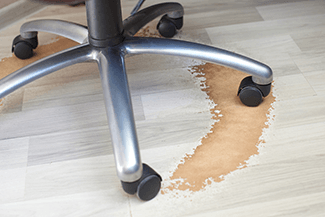
Rosie has heard of warranties that require daily vacuuming with a brush beater and twice a day in high-traffic areas. Who has time for that? Plus, a professional cleaning by a certified cleaner every six months. Regular carpet cleaning keeps the fibers from breaking down. Save the cleaning receipts for proof of maintenance. An electric, free-roaming carpet cleaner may not do the trick. Mitch suggests steering clear of over-the-counter spot carpet cleaners because they can be destructive. They can pull the color out along with the stain. There are natural products that Bram sells that dry and then vacuumed up. Baking soda is also a remedy. “It works great on Otter Pops!” he testifies.
The finish warranty typically does not cover damages and wear and tear like scuffs and scratches. Direct sunlight can cause the color of the floor to fade. That damage is also generally not covered.
Moisture Damage
Excessive moisture caused by flooding or large spills can cause significant damage to hardwood, laminate, carpet, or vinyl flooring. Water can be absorbed by planks, causing them to swell, buckle, warp, or come loose.
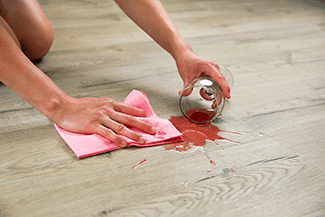
It’s important to note that a warranty will not typically cover damage from flooding and excessive moisture for hardwood flooring. Therefore, you must protect hardwood from water damage by cleaning up spills ASAP.
While “100% waterproof” laminate and vinyl flooring may not absorb moisture they may not prevent liquid from causing damage to the subflooring either. That too, will not be covered by the warranty. Regardless of the level of waterproofing or water-resistant, floods and spills must be cleaned up immediately, so the planks and subfloor are not damaged.
Get It In Writing
As you can see, many things can void a flooring’s warranty. Ralph Williamson, CTC, Ceramic Tile & Stone Consulting, offers these additional tips regardless of the type of flooring you install.
Make sure that the installation contractor is the only one who does any repairs.
Ask the contractor if your installation is within the industry’s and manufacturer’s standards.
If installing tile, ask the homebuilder or tile contractor if the manufacturer’s recommended thin-set and grout were used.
 Ask the home builder or contractor for a maintenance schedule. It should include when and how to clean and seal the flooring, and the products you can use. Add those dates and tasks to your Rosie on the House Home Maintenance Handbook. Williamson notes that many people are voiding their warranties because they did not use the products recommended by the dealer, manufacturer, or contractor.
Ask the home builder or contractor for a maintenance schedule. It should include when and how to clean and seal the flooring, and the products you can use. Add those dates and tasks to your Rosie on the House Home Maintenance Handbook. Williamson notes that many people are voiding their warranties because they did not use the products recommended by the dealer, manufacturer, or contractor.
When the installation is completed, make sure you have enough tile, grout, and thin-set for what is called “attic stock” for any repairs.
A good visual inspection of the tiles and grout should be made before accepting the installation.
Get a written warranty when the installation is completed. Ask questions if you don’t understand them.
If you think the warranty should be reinstated and the contractor/manufacturer says otherwise, consult the Arizona Registrar of Contractors (ROC). A homeowner may file a complaint with the ROC; however, it is limited to a period of two years from the completion date of the project. The most that a homeowner can receive from the Recovery Fund is $30,000.
There is a law in Arizona called Statute of Repose (Defect Law) that states in A.R.S. § 12-552 in layman’s terms, a homeowner has up to eight years after a project has been substantially completed to file a construction defect claim.
In A Nutshell
Warranties are set in place for a reason by the manufacturer and you need to follow their guidelines so that if you have a flooring failure, you can rely on the warranty for replacement. The bottom line, every manufacturer’s and installer’s warranties are different. Be sure to check with both of them for details.
###
Photo Credit
- Shutterstock






